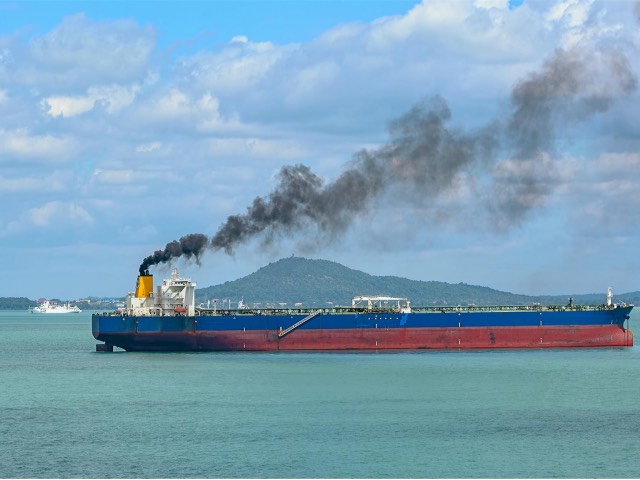On 14 July 2021 the European Commission adopted the EU’s “Fit for 55” package. This package consists of a set of inter-connected proposals that will together deliver the EU’s ambition of reducing its greenhouse gas (“GHG”) emissions by at least 55% by 2030, compared to 1990 levels, and for the EU to become a climate neutral continent by 2050. To achieve climate neutrality by 2050, a 90% reduction in overall transport emissions is needed.
The “Fit for 55” package includes ten proposals, four of which are directly related to maritime. A key proposal is the revision of the EU’s Emission Trading System (ETS), which the Commission proposes to gradually extend to the maritime sector over the period of 2023 to 2025. Another key proposal, FuelEU Maritime is aimed at stimulating the production and use of low- and zero-carbon, sustainable, fuels.
Shipping ETS
The revised ETS focuses on ships of 5,000 gt and above regardless of flag. Under the European Commission’s proposal, the ETS will apply in respect of emissions from intra-EU voyages, half of the emissions from extra-EU voyages, and emissions occurring at berth in EU ports.
Shipping companies would have to purchase and surrender ETS emission allowances for each tonne of reported CO2 emissions. To ensure a smooth transition, shipping companies would be required to pay for 20% of a ship’s emissions in 2023, with an annual increase reaching 100% coverage in 2026. For the administration of the system, each shipping company will be attributed to an administering authority of a Member State that will ensure compliance using the same rules as for other sectors. According to the ETS, the administering authority is determined based on where the shipping company is registered.
Companies failing to surrender the right amount of allowances by 30 April of the following year, must pay an extra €100 (£118) per tonne of CO2 equivalent to the amount of emissions it did not have allowances for. In addition to that, ships can be denied entry to EU ports where the responsible shipping company has failed to surrender the necessary allowances for two consecutive years.
The proposal suggests that a reporting and review clause will be included to monitor the implementation of the rules applicable to the maritime sector and to take account of relevant developments at the IMO.
FuelEU Maritime
The FuelEU Maritime Proposal brings in a long term framework to reduce emissions by increasing the use of sustainable alternative fuels in shipping and at European ports. The proposal also imposes on ship operators to comply with the maximum limits on the GHG intensity of the energy used on-board, increasing the stringency of these limits over time. Targets are determined against a reference value reflecting the fleet average GHG intensity of energy used on-board by ships in 2020, and reduced by the following percentages:
- 2% by 2025;
- 6% by 2030;
- 13% by 2035;
- 26% by 2040;
- 59% by 2045;
- 75% by 2050.
Companies that are not compliant with the rules by May 1 of the following year will have to pay a penalty which would go into a green fuel fund.
According to the proposal, owners of different ships could pool ships together to help one another with compliance, provided the ships in the pool are verified by the same verifier. Hence, a company could sell its excess credits to another company in the pool needing additional allowances for its ships.
In addition, passenger ships and container ships are required to use onshore power supply unless they can demonstrate the use of an alternative zero-emission technology.
Tax on bunkers
The EU’s energy taxation rules will also support GHG emission reduction by putting forward minimum rates of taxation on the relevant fuels used for intra-EU ferry, fishing and freight vessels. Members should take note that the EU is introducing taxes on bunkers over a 10-year transitional period from 2023. The revision of the Energy Taxation Directive 2003/96/EC (ETD) proposes a minimum €0.90 per gigajoule tax on bunker fuels used for intra-European maritime voyages from January 1, 2023. The tax rate for LNG as bunker is set at €0.60 per gigajoule. According to the revised ETD, ammonia and advanced biofuels used in shipping would be exempted to encourage the use of sustainable alternative fuels.
This tax directive however requires unanimous approval by all countries.
Alternative Fuels Infrastructure
Finally, to support the use of clean fuels at berth, the Directive on the Deployment of Alternative Fuels Infrastructure 2014/94/EU (DAFI) requires Member States to take necessary measures to ensure that minimum shore-side electricity supply for seagoing container and passenger ships is provided in maritime ports by 1 January 2030. Meanwhile, Member States are also required to ensure that an “appropriate” number of refuelling points for LNG are put in place at TEN-T core maritime ports by 1 January, 2025.
The ETS extension and the FuelEU Maritime both recognise the “polluter pays” principle. As such, the shipping company could, by means of a contractual arrangement, hold the entity that is directly responsible for decisions affecting the GHG intensity of the energy used by the ship, e.g. the Charterer, accountable for the compliance costs under this Regulation. The EU proposals highlight that “this entity would normally be the entity that is responsible for the choice of fuel, route and speed of the ship”.
The Club will continue monitoring further developments of the European Commission in regard to “The Fit for 55” package. If Members have any queries regarding the above, your usual Club contact will be pleased to assist you.
Source: UKP&I









































